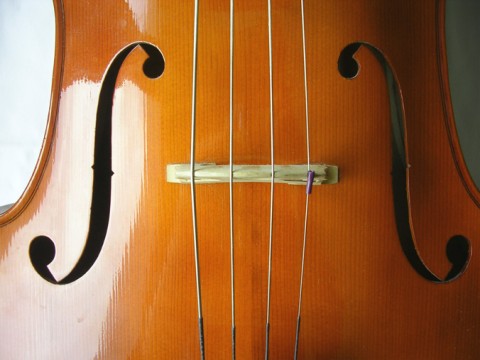
Photo from web.
Music elitists would have you believe that there are only two kinds of music worth listening to: compositions written by centuries-dead European men and Meshuggah. The fact that you have Ratatat and Florence and the Machine on your iPod means that you are a mainstream loving zombie with no personal taste. After all, if you don’t like the same compositions every other music elitist likes, how can you be an individual like them? That being said, I enjoy classical music and I attended the Connecticut College Orchestra in Concert on Tuesday and was sincerely impressed, even if I feel I have no right whatsoever to be listening to it since I can’t spend hours discussing the unique timbre of the trombone during section six of Symphony Number Whatever in Z minor.
There’s something inherently fancy about going to see a music show at Conn, assuming that music is being played in Evans Hall, which is where the orchestra played. Seeing a full music ensemble made up of a whopping thirteen violinists, two double bassists, a horn player, an oboist, three flutists, three cellists, two clarinetists, three trombonists, four violists, two bassoonists, two trumpeters, a tuba player, two percussionists and a conductor is a sight to behold. If you haven’t seen an orchestral performance, I would suggest going to at least one. To me, there are few things more impressive than watching over three dozen musicians play their instruments at the same time and produce an amazing, layered work of art.
But what about the pieces, you ask? While sitting in a completely-empty-except-for-myself row of Evans, I was treated to classic favorites such as La Forza del Destino and Symphony No. 94 and St. Paul Suite. Sound familiar? No? Well, how about “Gavotte and Mussette” from the Third English Suite? It was written by J.S. Bach, and even I know who that is. There was also “Final Scene” from Mozart’s Don Giovanni, which required the addition of six singers, who did a splendid job. At first I was miffed that the ending would be spoiled for me since I’ve never seen the opera, or any other opera for that matter, but I sighed with relief when I realized that the entire thing was sung in Italian.
I should mention something: when going to an orchestra, you would be wise not to schedule anything directly afterward, as the time can vary greatly, depending on the pieces being played. For example, Symphony No. 94 stopped so many times during the performance that I thought I was hearing ten different compositions. But I wasn’t! In fact, another quick tip for all concertgoers: don’t start clapping until after the conductor stops conducting, turns around and bows. Apparently, and one would think that I would think that this was obvious, this signals the end of the piece, and thus, the proper time to applaud.
As for the highlight reel, the last two pieces were my favorite. Alfred Reed’s Russian Christmas Music, aside from having a really pragmatic name, started off very good, turning dark and menacing in the beginning, in the middle and then again in the end. Christmas in Russia is clearly not as jolly a holiday as it is elsewhere in the world. To make up for this, the final song of the evening was “Sleigh Ride” by Leroy Anderson, a Christmas classic. Don’t remember that one? It’s the one with the lyrics no one really comprehends except for “giddy up, giddy up, giddy up-let’s go!”
Before the piece was played, the conductor, James E. Jackson III, turned to the audience and commended the orchestra for their hard work and talent, and then asked if we, the audience, had any keys. All twenty or so of us did, except for me, whose single room key jingled dully and probably couldn’t inspire Christmas cheer in Buddy the Elf. He told us that we were going to be the sleigh bells. A musical performance with audience participation? If orchestral arrangements ever go 3-D, this will be how they do it.
So for the entire song, which was longer than I remember, the audience jangled their keys high above their heads, losing spirit at a rate of two audience members per thirty seconds until the conductor, with his keen ears, turned around in mid-motion to signal us to keep going and brought it all on track again. Leave it to an audience to be too lazy to shake keys in the air for a single song, even though the first chair violinist has been positively throwing down for the last two hours and hasn’t even broken a sweat.
For those of you wondering if this has been a satirical piece or not, let me clarify: I’m not sure. Do I like classical music? Yes. Do I enjoy watching orchestras perform? Yes. Do I appreciate the colossal amount of effort that goes into them? Yes! The Connecticut College Orchestra is a talented group of young men and women who are all obviously very good at what they do, and what disappointed me was the fact that by the time intermission was over there were actually more performers on stage than there were audience members, and that’s messed up. It’s free of charge to Conn students and it’s a good show. So the next time the Connecticut College Orchestra is in concert, get out there and support them. And bring more than one key. •








